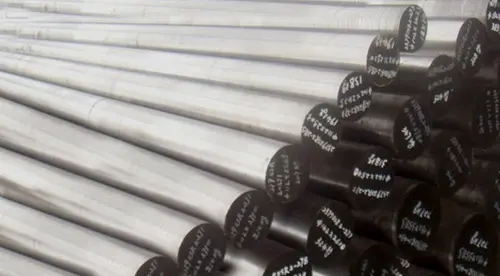ASP 2023 Equivalent

High speed steel comes in many grades and types. ASP 2023 also known as S790, PM 23 and M3-2, offer reliable results for a range of industrial applications. Explore the properties, chemical treatment and applications of this high alloyed powder metallurgical steel available from Griggs Steel.
Physical Properties
PM 23 steel, is an ASP 2023 equivalent which has excellent wear resistance and high levels of compressive strength. This makes it suitable for a number of cold work applications and cutting tools. Choose PM 23 steel for superior grindability and machinability.
ASP 2023 performs well in tool manufacturing thanks to its wear resistance, red hardness, toughness and ease of grinding. Here are the physical properties and chemical composition of this steel:
- Density: 0.287 lb/in³
- Modulus of elasticity: 33 x 10⁶ psi
- Carbon: 1.28
- Tungsten: 6.4
- Chromium: 4
- Molybdenum: 5
- Vanadium: 3.1
The result of these physical and chemical properties is excellent steel for high-performance cutting tools. The chemical properties protect it from dimensional instability after a heat treatment, so it’s a competitive candidate for popular thermal treatments as well as in cold rolling production techniques.
Thermal Treatments
There are five thermal treatments that ASP 2023 equivalent alloy can undergo. Each one offers different benefits depending on your application:
- Preheating: This step uses 840 to 930 and 1560 to 1650 degrees Fahrenheit to prepare the steel for a thermal treatment. Follow this preheating step before austenitizing or performing other applicable heat treatments.
- Austenitizing: After the preheating step, rapidly increase the temperature by transferring the steel to another furnace. Choose a temperature between 1920 and 2160 degrees Fahrenheit for this second furnace. Avoid oxidation and decarburization for a successful hardening process.
- Quenching: Start with a vacuum furnace with sufficient overpressure of high speed gas, typically between 2 and 5 bar. A fluidized bed or martempering bath of approximately 1020 degrees Fahrenheit is used, then the product should be cooled until it reaches 120 degrees Fahrenheit. Finish with immediate tempering.
- Tempering: Tempering ASP 2023 steel for cold work applications is carried 1040 degrees Fahrenheit. From there, three full-temperature tempering rounds are achieved for one hour. The product must be cooled to room temperature between rounds. The result is less than 1% austenite content.
- Annealing: Perform this process before re-hardening but after hot working. Start by heating for less than 400 degrees Fahrenheit per hour until the alloy reaches 1600 degrees Fahrenheit. Maintain this temperature for 1 hour per inch of product thickness, for at least 2 hours. Don’t exceed 30 degrees Fahrenheit per hour heat reduction during the cooling phase until it reaches 1000 degrees Fahrenheit. Finally, cool to ambient temperature in the air or furnace.
Available Product Shapes
ASP 2023 can be delivered in a range of product shapes. Choose between coils, flat bars, round bars, cold rolled strips and hot rolled sheets for your manufacturing process. Discuss the optimal product shape for your tool or cold work application with us to determine the proper solution.
Applications of ASP 2023
Work with PM 23 steel to enjoy a polishable material for machining, hot forming or electrical discharge machining. The chemical properties and physical characteristics of this alloy make it particularly popular for creating the following components:
- Stamping, machining and precision cutting tools
- Rotary knives
- Circular saw segments
- Cold extrusion punches
- Gear shaper cutters
- Plastic molds with high wear resistance
Contact Griggs Steel today for more information. With over 65 years experience in the industry we are the number one suppliers of high speed tool steel in the USA.
